Climate action
Strongly committed to climate action and carbon neutral since 2015, Université Laval proposes to go further by choosing ambitious reduction targets and offering its community options to offset the emissions they cannot reduce.
Voluntary offset program

Neutralize climate impact
Through the voluntary offset program, you can offset GHG emissions associated with your travel by car, bus, train or plane. To offset GHG emission is to neutralize the impact of our actions on climate change.
Offsetting is done by purchasing university carbon offsets on the online platform (for English version, click on the English link at the top right of the page) or by buying an offset when purchasing a parking permit.

Beyond offsetting
In addition to neutralizing your GHG emissions by buying carbon offsets, you are supporting University's innovative climate action projects. In fact, for every dollar, $0.80 will be used for GHG offsetting and $0.20 will be used to support concrete actions to fight climate change.
The University itself provides carbon offsetting projects by reforesting areas on the territory of the Montmorency Forest (PDF). It also purchases Gold Standard or VCS certified carbon offsets, which ensures real and verifiable GHG offsetting.

Calculate your GHG emissions
We provide our community with GHG emission databases for the main means of land transportation (xls) and major air destinations (PDF).
To calculate travel-related GHG emissions produced by attendees of the activities or events that you organize, use our calculator (xls).
Carbon neutrality
Université Laval is the first university in Québec to reduce its greenhouse gas emissions to zero, and the first in Canada to do so on an entirely voluntary basis. We have maintained carbon neutral status since 2015 by reducing GHG emissions at the source and offsetting those that can’t be reduced.
Carbon neutrality means that the University’s Scope 1 and 2 greenhouse gas emissions are equal to the sum of emission reduction efforts and offsets. With emissions considered to be at zero, there is no climate impact.
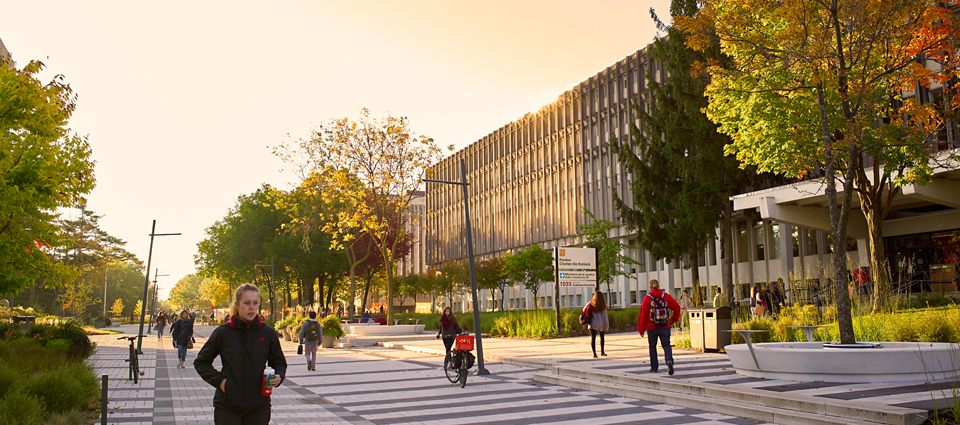

GHG emissions report
As part of its commitment to continuous improvement, Université Laval rigorously tracks its GHG emissions and transparently discolses them. The University's most recent GHG emission report, GHG Emissions Report 2021-2022 (PDF, available in French only), shows a 34% decrease in scope 1 and 2 GHG emissions since 2006, despite a 24% increase in the employee and student population and a 33% increase of the buildings area included in the reporting scope. The report also shows a significant increase in the use of renewable energy sources, from 39,4% in 2006 to 55% in 2020-2022.
Every 5 years, the University's GHG emissions report is verified by a third party to ensure that the calculation methodology complies with international standards. The Verification Notice for the 2019-2020 report (PDF, available in French only) was produced by the Bureau de normalisation du Québec.
Objective 2035: a campus powered by 100% renewable energy!
As part of its new Energy Strategy, Université Laval continues to move forward with the energy transition. Adopted in October 2022, the strategy calls for the entire campus to be powered by renewable energy by 2035.
By 2030, the international reference year, this will result in a 70% reduction in category 1 and 2 GHG emissions compared to 2006. This is equivalent to more than 26,000 tonnes of CO2eq. not being released into the atmosphere each year.
Upcoming Climate Action Plan
Drafting committee
The Climate Action Plan is developed by an advisory committee bringing together members of the University's faculty, students and professionals. It also relies on interactions with the university community.
Participatory writing
Like the common vision for sustainable development (PDF), the Climate Action Plan is written with, by and for the university community. As soon as possible, the community will be invited to consult the preliminary version of this plan in order to issue their comments on improvements.
Objectives
The Climate Action Plan aims to set ambitious targets for the University to go beyond carbon neutrality, further reduce its carbon footprint and adapt its campus to climate change. It relies on its teaching and research mission, on the opportunities for innovation at the heart of its living environment and on the commitment of its community to society.
Previous version
The 2015-2018 Plan to Fight Climate Change (PDF) relies on three main steps: measuring its greenhouse gas (GHG) emissions, reducing emissions, and offsetting the emissions it can’t reduce. The results as of April 30, 2018 (PDF, available in French only) are also available.
Reducing GHG emissions on campus
Discover some of the concrete ways we have significantly reduced GHG emissions through the innovations and efforts of the ULaval community.
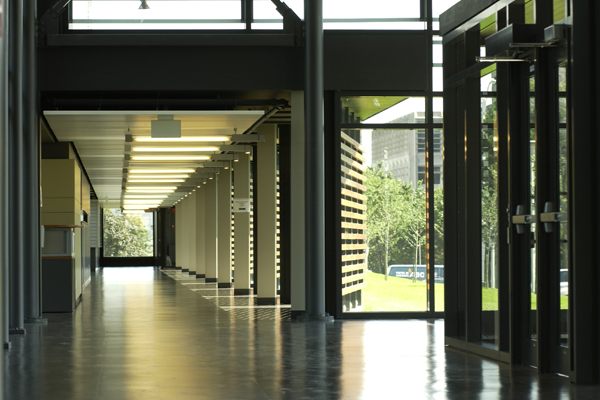
Electric boiler
By optimizing boiler combustion at the power plant and adding an electric boiler, the University reduced heating-related GHG emissions by 27% between 2006 and 2010.
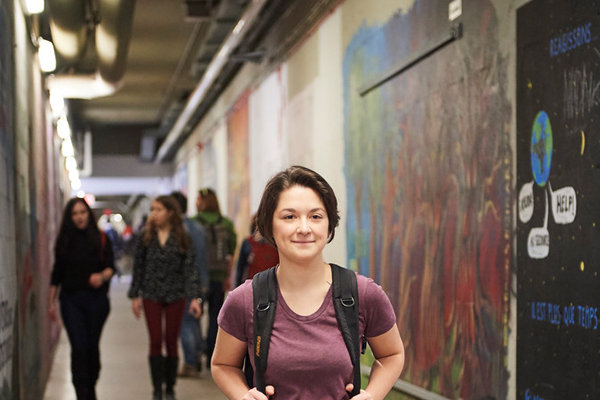
Heat pumps
Pipes originally designed to cool buildings are now used to transfer heat from one building to another via 24 heat pumps. This system has generated a reduction of approximately 3,500 tonnes of CO2 equivalent annually.
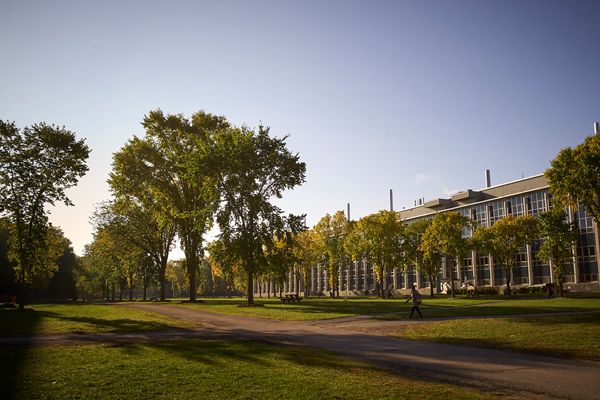
Adrien-Pouliot Building
Energy efficiency retrofits on the heating, ventilation, and air conditioning systems were carried out in 2012 on the Adrien-Pouliot Building. This helped reduce the building’s energy consumption by 30%, including a 68% reduction in the steam used to heat the building.
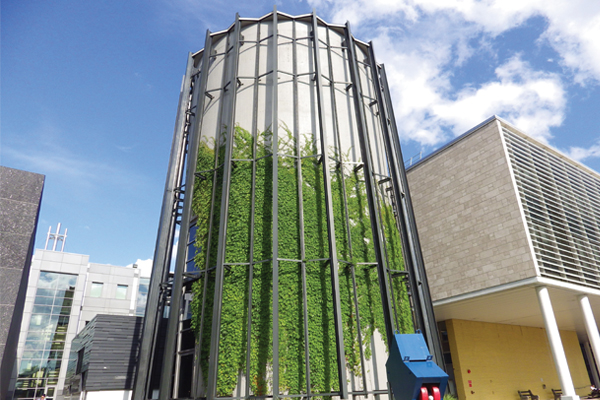
The Colosse supercomputer
The Colosse, a supercomputer installed in 2010 in the former particle accelerator silo at the Alexandre-Vachon Building, is arranged in a concentric manner that allows heat produced by the servers to be recovered and facilitates ventilation and cooling.
Offsetting GHG emissions
Université Laval has three ways of offsetting its greenhouse gas emissions, including carbon sinks—natural reservoirs that absorb carbon from the atmosphere and help reduce the amount of atmospheric CO2.
Sustainable management of the Montmorency Forest carbon sink
At 397 km2, the Montmorency Forest is the largest teaching and research forest in the world. Management practices improve the carbon sequestration capacity of the forest, which absorbs an average of 14,413 tonnes of CO2 equivalent per year.
Use of the Séminaire de Québec carbon sink
Séminaire de Québec has transferred to the University the rights to use a volume of sequestered carbon equivalent to 5,705 tonnes of CO2 per year over a five-year period. In order to generate this volume of carbon credits, the seminary has set aside two conservation areas within the Seigneurie de Beaupré Forest where no harvesting will take place.
Carbon credit acquisition
To achieve complete campus carbon neutrality, Université Laval also purchases carbon credits on the voluntary market. The University opts for value-added carbon credits, which it acquires from organizations with which it can share carbon sequestration expertise. Partner organizations include Écotierra, a Québec company that provides high-quality carbon credits from agroforestry projects developed mainly in Latin America.

UniC - International University Network for Climate Action
The UniC Network is a powerful tool for promoting and highlighting the role of students in the fight against climate change. Unprecedented in the academic realm, it aims to bring university students from every continent together to collaborate on a series of collective and interdisciplinary projects.
Advisory committee
The members of the advisory committee are selected for their complementary expertise in the fight against climate change. Their role is to suggest avenues to explore and actions to take on campus in order to better respond to current and future climate issues, as informed by university research.
Audrey Boivin
Responsible for Climate action axis
Operations Coordinator
Office of the Vice Rector, External and International Affairs and Health
Nathalie Barrette
Tenured professor
Department of Geography
Faculty of Forestry, Geography and Geomatics
Geraud De Lassus Saint-Genies
Fellow professor
Law Faculty
Marc Journeault
Tenured professor
School of Accounting
Faculty of Business Administration
Marie-Frédérique Fortin
Operations Coordinator and UniC liaison
Office of the Vice Rector, External and International Affairs and Health
Jonathan L'Écuyer Lessard
Bachelor's student in sustainable development of the territory
Department of Geography
Faculty of Forestry, Geography and Geomatics
Pierre Lemay
Adjunct to the Vice-Rector
Office of the Vice Rector, External and International Affairs and Health
Tra Jean-Marie Ta Bi
MBA student in Strategic Project Management
Faculty of business Administration
Évelyne Thiffault
Associate professor
Department of Wood and Forest Sciences
Faculty of Forestry, Geography and Geomatics
Pierre Valois
Tenured professor
Department of Foundations and Practices in Education
Faculty of Education
Marise Vallières
Research and Planning Officer (energy component)
Building Services